7. The Earrings of Madame De…(1953)
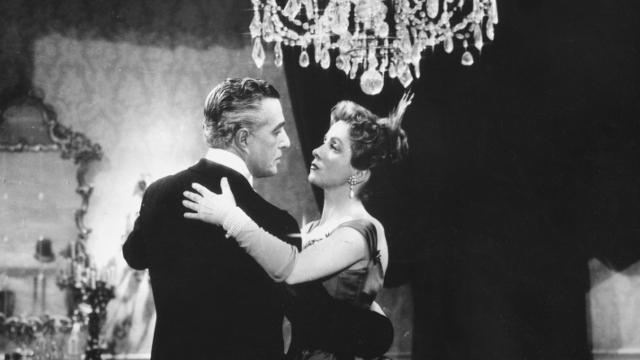
In whatever realm the superb Austrian born director Max Ophuls now resides, he must be amused and/or amazed at the high esteem in which he is now being held, for it rarely seemed like it was going that way during his lifetime. He had seen some early successes such Liebelei (1933) before the bad combination of Nazi takeover and his Jewishness caused him to flee to Hollywood for what looked to be, at the time, a disastrous spell, but which now looks far better.
Upon his return to Europe (France) he hit his stride with three back to back hits before meeting his Waterloo with his last film, the costly flop Lola Montes in 1955 (now a classic and the textbook example of the use of color and wide-screen film composition). The lushly modern looking Lola has made such a comeback that it now somewhat overshadows what may be Ophuls truer masterpiece, the last of the three hits, The Earrings of Madame De…
Taken from a period novel, the film focuses on the title character, a lovely but quite shallow noblewoman (Danielle Darrieux) who likes to gamble a bit. It seems that she has lost a lot of money must sell some of her jewelry to pay her debts. She decides to part with her least favorite, a pair of earrings given to her as a wedding present by her distinguished husband (Charles Boyer).
It seems that the two have everything going for them as a couple…except love, but in the society of their place and time (19th century France) that isn’t necessary. The pawnbroker who buys the earrings contacts the husband who proceeds to buy them and give them to a mistress who then sells them to pay debts of her own, which helps them find their way into the possession of an equally distinguished Italian noble (Vittorio DeSica, showing why he could well have made it on acting and star presence alone).
The noble is also an ambassador to France and he socially meets Madame De and they fall in love, causing him to give her…the earrings, now more precious than gold to her and which her husband knows were not given to her by him this time. Madame has now committed the unpardonable sin of her set…she’s truly fallen in love. The results turn out to be tragic.
What isn’t superb about this film? Ophuls creates the atmosphere and look of this world to stunning effect and this film may well be the ultimate example of his legendary endless tracking shots (and every one of them there for a good reason).
The acting could not be better. Darrieux and Boyer were among the finest European actors of their time (and he conquered Hollywood, too, though he was better back home) and they had paired in the big hit Mayerling in 1937 but outdid themselves here and DeSica is their match.
This may also be the ultimate Ophuls film examining the lives of women and one which, per usual, makes the woman the protagonist, the mainspring of the story. Many have commented on this aspect of Ophuls’ work and this may well be his magnum opus in that regard as well.
8. I Vitelloni (1953)
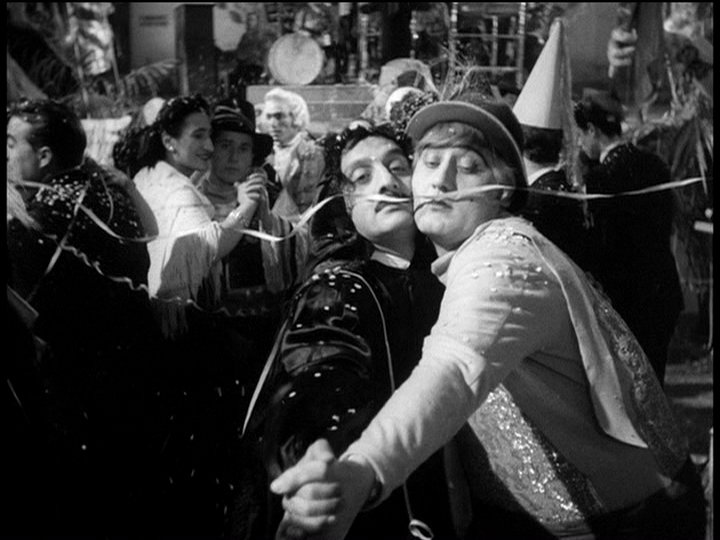
Federico Fellini may well still be Italy’s best known film maker, even if his reputation has taken it on the chin a bit in recent decades (many thinking that he started sliding downhill from the mid-60s onward). Though he later adopted a rather surreal style, fixating on the grotesque in a benign way, many prefer his earlier works, which drew from the director-writer’s own life and experiences.
Though he had come to Rome from a small costal Italian town in the mid-40s and had gotten into the film scene as first a screenwriter, then director (starting out as co-director of 1948’s uneven Variety Lights), he looks to have been warming up until making this, his first real autobiographical film.
The story takes place in a small costal Italian town much like the one which provided the setting for the film maker’s youth and occurs about ten years earlier in time from the film’s production date. Significantly, this was about the time the young Fellini decided to leave the town and go to Rome in order to make something of his life by entering the film industry.
The film’s story is essentially the progress of that journey but put in the broader context of a group of young men who spend their time hanging out together and finding good times…and little else. (The title is an Italian expression denoting young men who are idle and aimless, being kept as pets, as it were.)
Though not the main character per se, Fellini is represent by aspiring young playwright Moraldo (Franco Interlenghi), who is more mentally astute, younger, and more driven than the four friends with whom he hangs around. He alone can see that their lives are going nowhere and their rather puny dreams will stay just that.
Though the film didn’t make any great careers, it did help that of actor Alberto Sordi (whom Fellini had used in his 1952 comic romp The White Shiek) who plays a rather effeminate young man who can’t get it all together.
Though this film has no trace of the famed fantastic and surreal elements which marked Fellini’s later work, it is the first individual expression of one of the most personal of the world cinema’s great film makers.
The next notable stanza in that saga was 1959’s tremendous La Dolce Vita and it would not have been at all implausible for the director to have made an older Moraldo the main character of that film.
9. The Wages of Fear (1953)
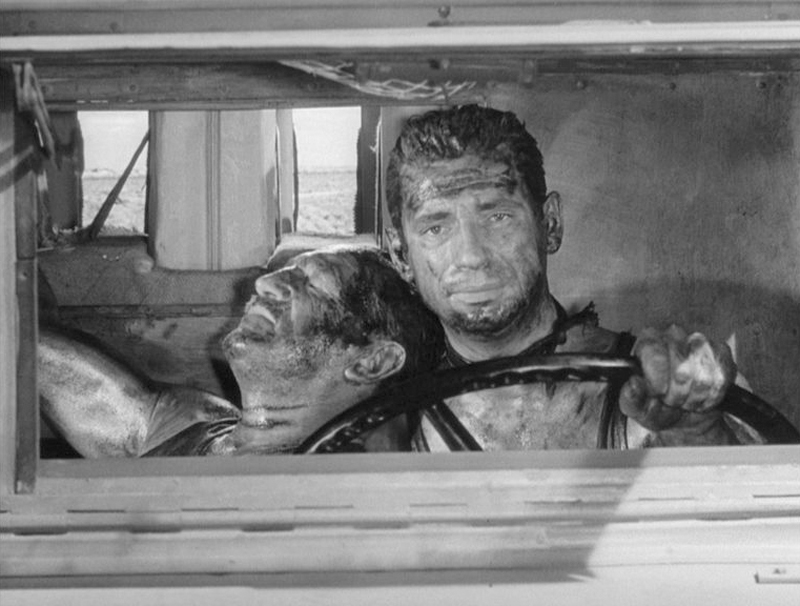
To say that French director Henri Georges Clouzot had a pessimistic view of the world and mankind would be one great understatement. Never in good health (though he lived to a reasonable age), Clouzot seemed to think life and people were pretty much for the birds. It didn’t help that his first great film, 1943’s Le Corbeau, caused him to be (wrongly) labeled a Nazi collaborator and hindered his international career.
It took fully ten years for him to break through but, when he did, he rendered a masterpiece. Taken from a novel well known in France, The Wages of Fear is set in a desolate patch of South America. A fire is burning out of control somewhat nearby a shabby little town filled with even shabbier men who all seem to have gotten there while running from something and now they are all good and trapped.
Ironically, the fire offers redemption…at a price. Nitroglycerin is required to put out the blaze and the only way it can be delivered is on trucks over rocky, minimally maintained dirt roads through primitive countryside. No one with any choice (or sense) would take on so dangerous an assignment but these men have very little to no choice.
This was not the type of mystery/suspense film for which the director was best known, the black tone and relentless adrenaline propelling the plot are both typical of Clouzot and greater than anything else he had done to that date.
It didn’t hurt that Clouzot had chosen his finest cast, the great French star Yves Montand, Charles Vanel, Peter Van Eyck and Folco Lulli as the men and Clouzot’s delicately lovely wife, Vera, in the only major female role.
The film was originally cut in the US so as not to be critical of American oil companies (the fire in the story is started by an oil blaze) but the film has survived to be restored to its full potency. For many, this remains Clouzot’s high water mark but, ironically, it would be eclipsed in the greater public’s mind by another film coming up in this list.
10. Hobson’s Choice (1954)

David Lean had started his career as one of the British film industry’s top editors before becoming one of its top directors, pretty much in one great leap, being chosen to partner with one of Britain’s great theatrical figures, Noel Coward. Though Coward was best known as a comic playwright, his work with Lean was mostly dramatic and their one comedy, 1945’s Blithe Spirit, was their lone failure (though it looks somewhat better to modern eyes).
Truth to be told, Lean developed a most lofty reputation but was never considered a great laugh maker. However, he did deliver one truly fine hit comedy, an adaptation of the British theatrical chestnut Hobson’s Choice.
The story concerns late 19th century English cobbler Henry Hobson (Charles Laughton), a dreadful old alcoholic tyrant who rides heard over all concerned in his orbit, including daughters, sons-in law, and his meek assistant (John Mills).
However, his oldest daughter, spinster Maggie (Brenda de Banzie) has other ideas concerning both dad and the assistant and her determination and the fates end up handing old Hobson a surprise or two.
Though there are some broadly comic moments (all Laughton’s) the film is much more a wry comedy of character and Lean directs it with a rare discernment for personal nuance and motivation. Always a gifted directors with actors (and superb technician with a perfect eye for camera set-up and editing), Lean chose a truly superior cast for the film.
The leading lady was never a great star but she was always a fine actor and Mills, a staple of the British film industry, was always one of Lean’s most reliable players. However, the spice in this film comes from Laughton. A difficult actor, talented but given to hamming if not controlled, he was coming off a bad decade plus at the time of this film, despite a sterling Oscar winning decade in the 1930s (he was the first British actor to win an Oscar).
Though Lean, not one to put up with the obstinate or petulant, never used him again, this film set the stage for the actor to regain his footings for a superior final decade in film. This might well be an unusual moment in the director’s career but it is still a wonderful anomaly.
11. Journey to Italy (Voyage to Italy, 1954)
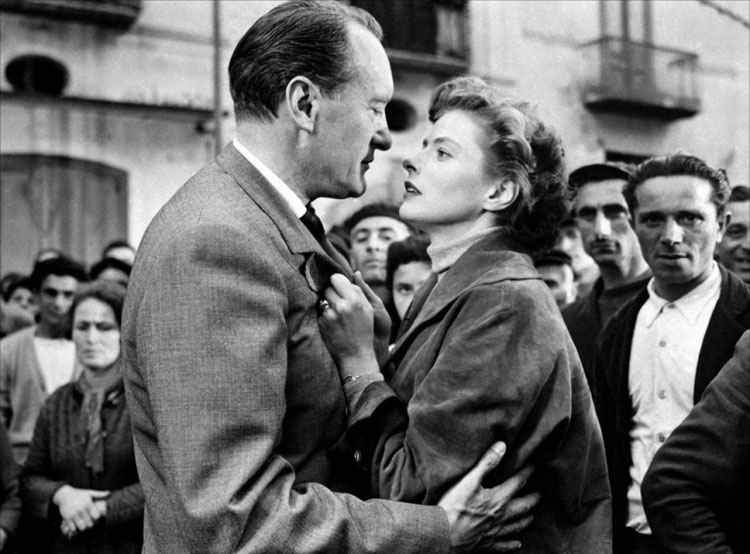
In 1948, Ingrid Bergman, one of the 1940s great film stars and actresses, virtually ended her career when she went to Italy at the invitation of noted neo-realist film director Roberto Rossellini to make Strombolli. The actress was married and a mother but not as happy in her marriage as the public perceived.
Rossellini was a fine artist but a bit of a roué and the two developed feelings, ending up with Bergman becoming pregnant by the film maker and bravely refusing to conceal any of the messy truth.
However, the world seemed to take it upon itself to judge both Bergman and Rossellini and not only was Strombolli a big flop but so were all of the handful of films the two made together until Jean Renior courageously hired her to star in his 1956 film Elena and Her Men (and sadly, the professional problems helped to end the pair’s belated marriage).
Today, in a calmer light, the pair’s works look to be somewhat better than the public and critics gave them credit for being at the time. Though some still look a bit problematic (the director continued with his neo-realist style long after it was no longer the critical rage) there is one effort which looks to be considered a masterpiece more with the passing years.
In Journey to Italy (or Voyage to Italy, if one sees the version shot in Italian or the one shot in English), Bergman and then recent Oscar winner George Sanders play a long married couple from England who are making the title trip in order to sell recently inherited Italian property. They are also trying to make the journey into something of a pleasure trip in hopes of restoring some of the passion to a marriage which looks to have seen far better days.
Oddly, even in the face of a decision to end things, the experiences of visiting the ancient sites of Italy cause a change in the pair which ends up giving some hope for them.
Like all of the films the actress-director made together, the plot and dialog were largely improvised amid real settings and non-actors to achieve a truthful tone. Indeed, the emotional high point comes when the couple visit Pompeii and the wife is overcome by the sight of ossified lovers who died together when Vesuvius erupted, provoking an equally emotional outpouring from the couple.
How much of this was the emotional state emanating from the star and director? Who can say, but this quality helps to mark this film as far more than the worthless failure it was long considered.
12. Senso (1954)
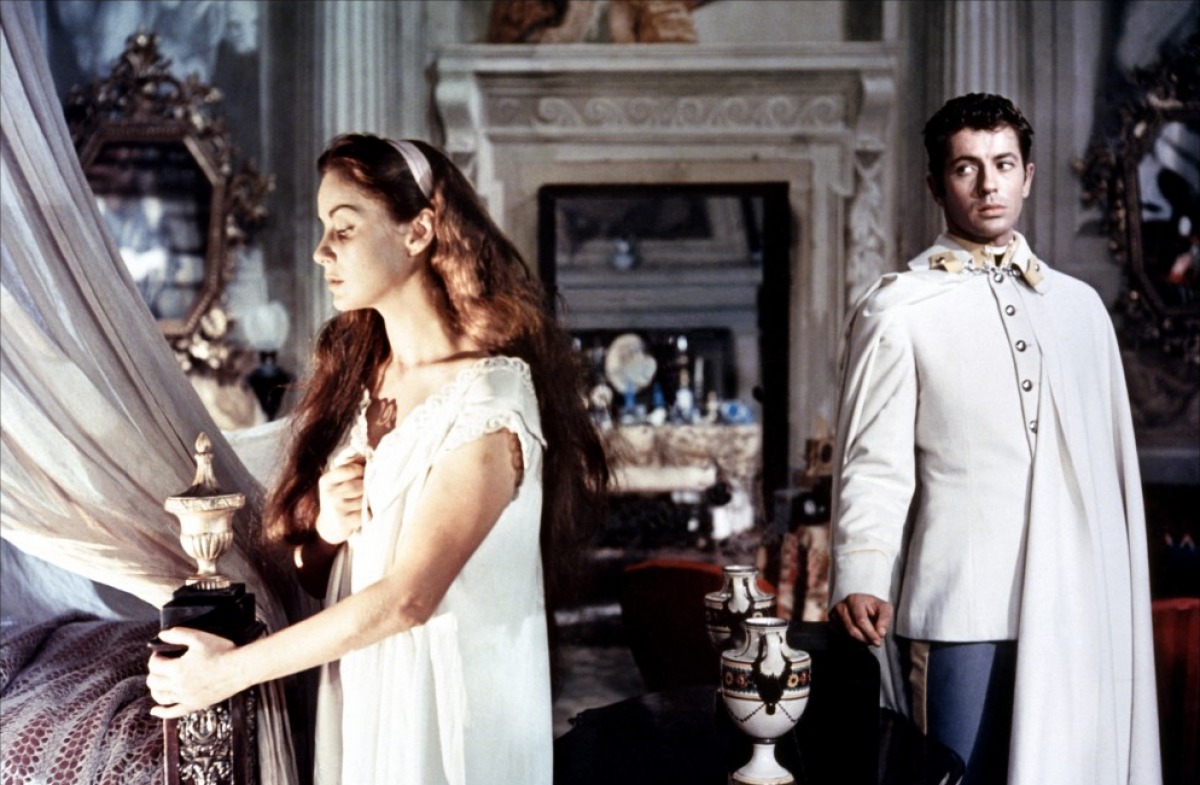
If one didn’t know that the renowned Italian director Luchino Viconti was born an aristocrat, the discerning might well have guessed based on the director’s restrained classical style and sense of refinement, even in the face of his eternal dedication to the proletariat.
Though many of his films might lay claim to being his masterpiece, Senso (terribly retitled The Wanton Countess in the US on first release) looks to be the start of his great period.
Exquisitely set in late 19th century Italy, the film focuses on the fatefully passionate love affair between a countess (Italian star Alida Valli), unhappy in her marriage to an older members of the noble class, and a self-serving young officer (Hollywood star Farley Granger) during a time of dramatic political upheaval in Italy.
The idea of amour fou presents itself often in Visconti’s work (and, life, as it so happens) but never more forcefully than in this film. Though the director desperately wanted Ingrid Bergman and Marlon Brando for the leads (think on that one!), the actors he did get acquit themselves well.
However, the real star is Visconti. His operatic style is so lush and seductive that it melds the personal story and the political one together quite seamlessly and the whole thing never becomes oppressive or over baked. Only a great artist could have pulled it off so well and this one was a promise for things to come.